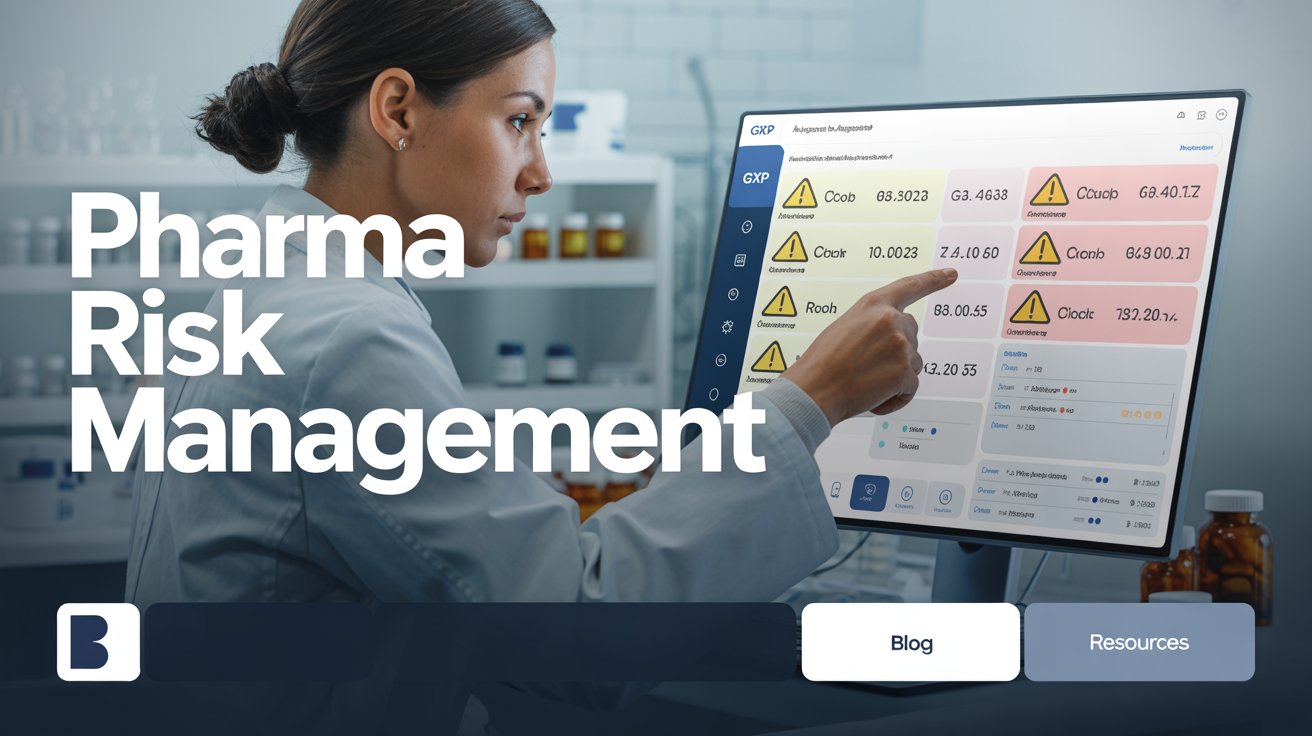No products in the cart.
Risk Management Strategies in Pharmaceutical Projects: Mitigating Uncertainty for Compliance and Success

Introduction: Why Risk Management Is Crucial in Pharma Projects
The pharmaceutical industry is high-risk by nature. From clinical trials and regulatory hurdles to manufacturing challenges and supply chain disruptions, uncertainty is everywhere. That’s why robust risk management strategies in pharmaceutical projects are not optional—they are mission-critical.
This article explores proven strategies to identify, assess, and mitigate risks in pharma projects. Whether you’re a project manager, QA professional, or regulatory lead, these insights will help you navigate complexity while staying compliant and on schedule.
Table of Contents
- Understanding Risk in Pharmaceutical Projects
- Categories of Risk in Pharma Project Management
- Importance of Early Risk Identification
- Top Risk Management Strategies in Pharmaceutical Projects
- Tools and Frameworks for Pharma Risk Management
- Real-World Examples of Risk Mitigation
- Challenges in Pharma Risk Management
- FAQs
- Final Thoughts & Strategic Action Plan
1. Understanding Risk in Pharmaceutical Projects
In pharma, risk is any event or condition that could negatively impact project timelines, cost, quality, safety, or regulatory approval.
Common Pharma Risk Domains:
- Regulatory compliance
- Clinical trial variability
- Product quality
- Supply chain reliability
- Manufacturing failures
- Technology adoption
- Human error or skill shortages
2. Categories of Risk in Pharma Project Management
Here’s how risks are typically classified:
A. Technical Risks
- Process deviations
- Equipment failure
- R&D bottlenecks
B. Regulatory Risks
- Delayed or denied approvals (FDA, EMA, CDSCO)
- Non-compliance with GxP or ICH guidelines
C. Financial Risks
- Cost overruns
- Budget misallocations
D. Operational Risks
- Inadequate training
- Staff attrition
- Poor communication
E. External Risks
- Vendor delays
- Geopolitical disruptions
- Pandemics
3. Importance of Early Risk Identification
The earlier you identify risks, the cheaper and easier they are to manage. According to PMI, 80% of high-impact project failures could have been mitigated through early risk planning.
🔍 Early Detection Methods:
- Risk brainstorming workshops
- Historical project analysis
- Cross-functional team interviews
- SWOT analysis
4. Top Risk Management Strategies in Pharmaceutical Projects
Here are the most effective strategies tailored for pharma:
1. Risk Register Creation
Maintain a dynamic document that lists all identified risks, their likelihood, impact, owners, and mitigation actions.
2. Prioritization with Risk Scoring
Use a probability × impact matrix to score and rank risks. Focus on high-probability/high-impact risks first.
3. Mitigation & Contingency Planning
Develop a mitigation plan (to reduce probability) and a contingency plan (if risk materializes).
4. Stakeholder Communication
Involve key stakeholders (QA, RA, Manufacturing) early and maintain transparency.
5. Compliance Reviews
Schedule internal audits and pre-approval checks regularly to reduce regulatory risks.
6. Scenario Planning
Use “what-if” analysis to model outcomes of specific risk events, such as a failed stability test or site closure.
5. Tools and Frameworks for Pharma Risk Management
Utilize structured tools to streamline strategy and documentation.
📈 Tools:
- FMEA (Failure Mode and Effects Analysis)
- Ishikawa Diagrams (Fishbone Analysis)
- Monte Carlo Simulations
- Risk Heat Maps
- Microsoft Project Risk Tracker
- Tableau Dashboards for Risk Monitoring
🧰 Frameworks:
- ICH Q9 (Quality Risk Management)
- GAMP 5 for computerized systems
- ISO 14971 for risk management in medical devices
6. Real-World Examples of Risk Mitigation
💊 Case 1: Manufacturing Risk
Company: AstraZeneca
Risk: API supply shortage
Mitigation: Dual sourcing strategy + real-time inventory dashboards
Outcome: Avoided batch release delay during a supplier shutdown.
🔬 Case 2: Clinical Trial Delay
Company: Novartis
Risk: Patient enrollment lag
Mitigation: Introduced AI-driven trial site selection
Outcome: Increased recruitment rate by 40%
7. Challenges in Pharma Risk Management
Despite best efforts, pharma projects still face hurdles:
| Challenge | Solution |
|---|---|
| Siloed data and poor integration | Implement centralized risk dashboards |
| Cultural resistance to transparency | Encourage open risk communication |
| Lack of training on risk tools | Conduct regular workshops for project teams |
| Over-focus on compliance, ignoring operational risks | Balance compliance with business goals |
8. FAQs
Q1. What is the most common risk in pharmaceutical projects?
Regulatory non-compliance and supply chain delays are among the top risks faced by pharma companies.
Q2. How often should risk assessments be updated?
Risk registers should be reviewed bi-weekly during active project phases, and monthly during maintenance phases.
Q3. Can risk management improve time-to-market?
Yes. Proactive risk strategies prevent delays, allowing faster product launches and smoother regulatory approvals.
9. Final Thoughts & Strategic Action Plan
Effective risk management strategies in pharmaceutical projects are essential to balance innovation with safety, speed with compliance. Whether launching a new product or navigating post-approval changes, pharma teams must be proactive, data-driven, and collaborative.
✅ Action Plan for Pharma Teams:
- Conduct a cross-departmental risk assessment
- Create and maintain a detailed risk register
- Align mitigation strategies with regulatory guidelines
- Use tools like FMEA and Tableau to visualize and monitor risks
- Build a culture of continuous risk awareness
Lead your pharma projects with foresight—because success in pharma isn’t just about delivery, it’s about delivering safely and consistently.
Read More:
Unlock Your Career Potential: The Ultimate Guide to Project Management Certification in 2025


